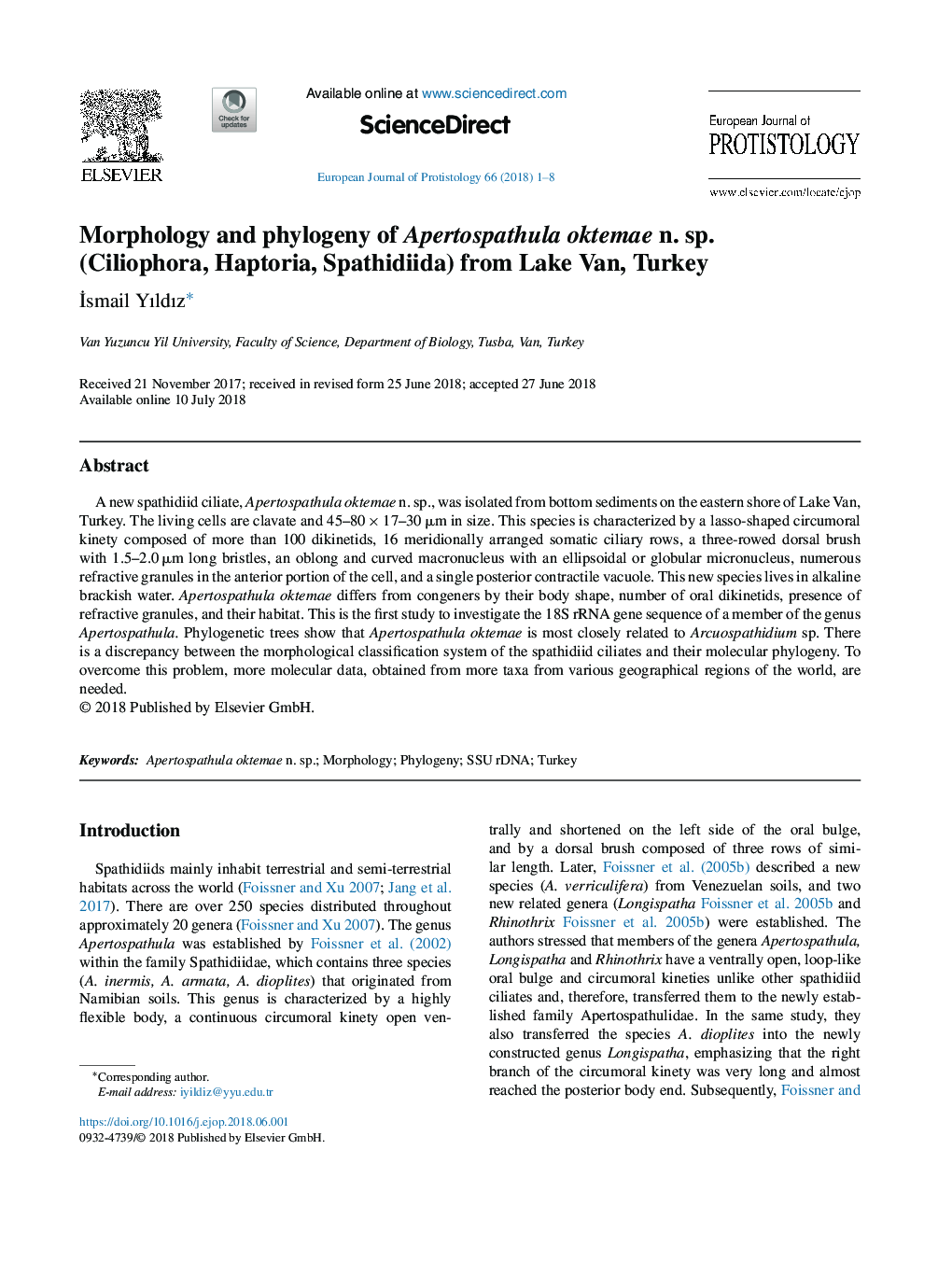| Article ID | Journal | Published Year | Pages | File Type |
|---|---|---|---|---|
| 8382313 | European Journal of Protistology | 2018 | 8 Pages |
Abstract
A new spathidiid ciliate, Apertospathula oktemae n. sp., was isolated from bottom sediments on the eastern shore of Lake Van, Turkey. The living cells are clavate and 45-80â¯Ãâ¯17-30â¯Î¼m in size. This species is characterized by a lasso-shaped circumoral kinety composed of more than 100 dikinetids, 16 meridionally arranged somatic ciliary rows, a three-rowed dorsal brush with 1.5-2.0â¯Î¼m long bristles, an oblong and curved macronucleus with an ellipsoidal or globular micronucleus, numerous refractive granules in the anterior portion of the cell, and a single posterior contractile vacuole. This new species lives in alkaline brackish water. Apertospathula oktemae differs from congeners by their body shape, number of oral dikinetids, presence of refractive granules, and their habitat. This is the first study to investigate the 18S rRNA gene sequence of a member of the genus Apertospathula. Phylogenetic trees show that Apertospathula oktemae is most closely related to Arcuospathidium sp. There is a discrepancy between the morphological classification system of the spathidiid ciliates and their molecular phylogeny. To overcome this problem, more molecular data, obtained from more taxa from various geographical regions of the world, are needed.
Keywords
Related Topics
Life Sciences
Agricultural and Biological Sciences
Agricultural and Biological Sciences (General)
Authors
İsmail Yıldız,
